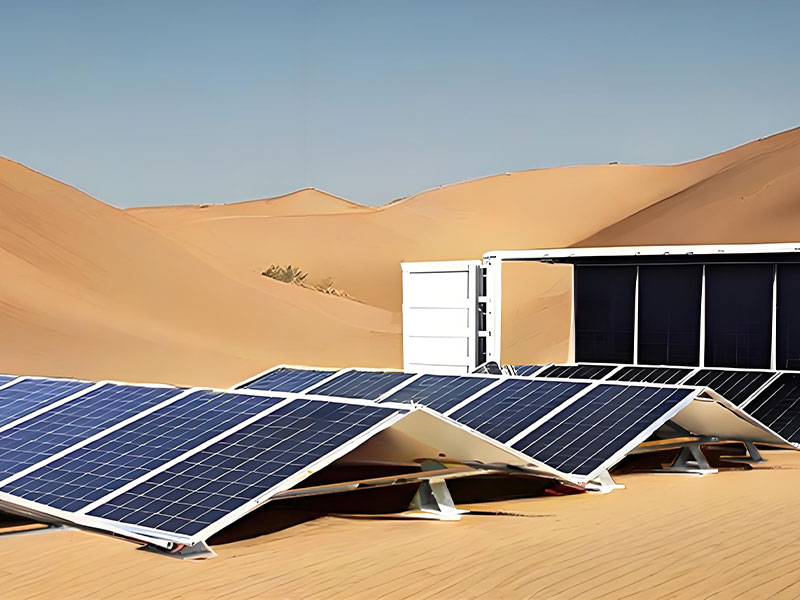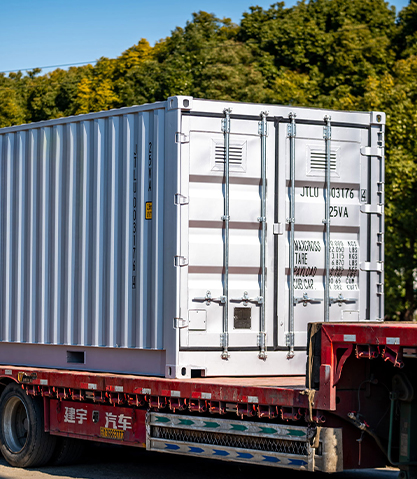As global demand for clean, reliable, and portable power increases, traditional energy solutions are being re-examined. Communities, industries, and governments alike are searching for alternatives that reduce dependency on fossil fuels, cut greenhouse gas emissions, and expand energy access to remote or off-grid locations. One such innovation gaining rapid adoption is the solar power container.
Solar power containers combine solar photovoltaic (PV) systems, battery storage, inverters, and auxiliary components into a self-contained shipping container. By integrating all necessary equipment within a transportable structure, these units provide modular, plug-and-play renewable energy systems that can be deployed almost anywhere in the world.
This article explores what solar power containers are, how they work, their design principles, industrial applications, benefits, challenges, and the future outlook for this innovative technology.
Content
- 1 What Is a Solar Power Container?
- 2 How Do Solar Power Containers Work?
- 3 Types and Configurations of Solar Power Containers
- 4 Advantages of Solar Power Containers
- 5 Applications of Solar Power Containers
- 6 Comparison: Solar Power Containers vs Diesel Generator Containers
- 7 Challenges and Considerations
- 8 Future Trends and Innovations
- 9 Buying Considerations
- 10 Conclusion
What Is a Solar Power Container?
At its core, a solar power container is a mobile solar power station engineered inside a standard ISO shipping container. The structure is rugged, transportable, and weather-resistant, making it suitable for deployment in harsh conditions.
Unlike traditional solar farms that require fixed installation, solar power containers are designed for mobility and rapid setup. They can be transported by truck, ship, or rail, and once on-site, they are ready for energy production with minimal assembly.
Key Features of a Solar Power Container
- Solar Photovoltaic Panels – either mounted on the roof or stored inside and deployed upon arrival.
- Battery Storage System – typically lithium-ion or advanced lead-acid batteries to store excess solar energy.
- Inverter and Power Electronics – convert DC to AC for practical use and manage system performance.
- Energy Management System (EMS) – monitors energy flow, regulates charging, and ensures efficiency.
- Optional Hybrid Integration – diesel generators, wind turbines, or hydrogen fuel cells may be integrated for additional backup.
In essence, a solar power container delivers a self-sufficient, renewable microgrid solution that can operate independently of national power networks.
How Do Solar Power Containers Work?
Although housed in a compact format, solar power containers function much like a conventional solar power plant, following a systematic energy cycle.
Step 1: Sunlight Capture
High-efficiency solar panels mounted on or around the container capture solar radiation. These panels convert sunlight into direct current (DC) electricity through the photovoltaic effect.
Step 2: Conversion
Since most appliances and industrial equipment require alternating current (AC), the DC electricity passes through inverters, which convert it into usable AC power.
Step 3: Energy Storage
Excess energy not immediately consumed is stored in batteries. This storage system ensures that electricity remains available at night, during cloudy weather, or when demand exceeds solar generation.
Step 4: Power Distribution
The integrated control system distributes electricity to connected loads—ranging from household appliances to industrial machinery. Power can also be fed into a local microgrid to supply multiple users.
Step 5: Energy Management
Smart energy management systems (EMS) track consumption patterns, regulate battery charging, and optimize overall efficiency. Some advanced systems use artificial intelligence to forecast demand and maximize performance.
This cycle allows solar power containers to function autonomously, supplying reliable electricity in locations where traditional power sources may be unavailable or unstable.
Types and Configurations of Solar Power Containers
Solar power containers are not one-size-fits-all. Their configurations can be tailored to match the scale, environment, and energy needs of different projects.
By Power Output
- Small Units (10–30 kW): Designed for households, small businesses, or rural clinics.
- Medium Units (50–250 kW): Suitable for villages, construction sites, or agricultural operations.
- Large Units (500 kW–1 MW+): Powering industrial projects, mining operations, or military bases.
By Energy Storage
- Standard Battery Systems: Typically lithium-ion, offering 4–8 hours of backup.
- Extended Storage Systems: Large battery banks supporting continuous operation for longer durations.
By Deployment Style
- Fixed Roof Panels: Panels mounted permanently on the container roof.
- Expandable/Deployable Arrays: Foldable or sliding panels stored inside the container during transport, deployed on-site for higher capacity.
By Integration
- Standalone Solar Container: 100% solar-powered system.
- Hybrid Container: Solar combined with diesel, wind, or hydrogen for redundancy.
- Grid-Tied Container: Connects to the local grid while also providing backup power.

Advantages of Solar Power Containers
1. Portability
Housed within ISO shipping containers, these systems can be shipped worldwide and set up in almost any environment.
2. Rapid Deployment
Most solar power containers are plug-and-play. Once on-site, they require minimal technical expertise to operate.
3. Sustainability
They generate clean energy with zero emissions, helping organizations reduce their carbon footprint.
4. Cost Savings
While the initial investment may be significant, long-term savings are achieved by eliminating fuel costs associated with diesel generators.
5. Scalability
Multiple containers can be deployed together, forming a larger modular solar power plant.
6. Reliability
With battery storage and optional hybrid backup, solar power containers provide continuous, stable power supply.
Applications of Solar Power Containers
Solar power containers are versatile and adaptable, finding applications across multiple industries:
- Remote Communities – Bringing electricity to off-grid villages, enabling lighting, education, and healthcare.
- Disaster Relief – Providing emergency power for hospitals, shelters, and communication systems after natural disasters.
- Construction and Mining Sites – Offering portable energy for equipment and worker camps in remote areas.
- Military Operations – Supplying secure, mobile power for bases and missions without reliance on local infrastructure.
- Agriculture – Powering irrigation systems, cold storage, and processing equipment in rural areas.
- Events and Festivals – Providing eco-friendly temporary power for concerts, fairs, and outdoor gatherings.
Comparison: Solar Power Containers vs Diesel Generator Containers
| Feature | Solar Power Container | Diesel Generator Container |
|---|---|---|
| Fuel Source | Renewable sunlight | Fossil fuels (diesel) |
| Emissions | Zero | High CO₂ and NOx |
| Operating Costs | Low (no fuel required) | High (fuel + maintenance) |
| Maintenance | Minimal (panels + batteries) | Frequent servicing needed |
| Noise | Silent | Loud operation |
| Lifespan | 20–25 years | 5–10 years |
| Scalability | Easily expandable | Limited |
This comparison highlights why industries are shifting from diesel-based systems to solar containers, especially in areas where fuel supply is costly or logistically difficult.
Challenges and Considerations
Despite the benefits, solar power containers come with challenges:
- High Initial Cost: Upfront investment can be higher compared to diesel generators.
- Weather Dependency: Performance depends on solar radiation, which varies by location and season.
- Battery Limitations: Battery lifespan and replacement costs must be considered.
- Space Requirements: Deployable solar arrays may require additional land area.
Future Trends and Innovations
The technology behind solar power containers continues to evolve, with several exciting developments on the horizon:
- AI-Powered Energy Management – Smarter software to optimize performance and predict demand.
- Advanced Battery Technology – Solid-state and flow batteries offering longer lifespans and higher efficiency.
- Hydrogen Hybrid Systems – Combining solar containers with hydrogen fuel cells for 24/7 clean energy.
- Smart Microgrids – Integration into decentralized energy networks for community-level power distribution.
- Modular Expansion – Easier interconnection of multiple containers for large-scale projects.
Buying Considerations
When selecting a solar power container, buyers should consider:
- Power Output Needs – Match container size with energy demand.
- Battery Capacity – Ensure adequate storage for night use.
- Climate Conditions – Choose appropriate solar and battery technologies for the environment.
- Customization Options – Deployable arrays, hybrid integration, or grid-tie options.
- Supplier Reliability – Work with manufacturers offering ISO-certified systems and after-sales support.
Conclusion
Solar power containers represent a transformative solution in renewable energy technology. By integrating solar panels, batteries, and smart control systems into a transportable container, they provide clean, reliable, and scalable power in locations where conventional solutions fall short.
From rural electrification to military operations, solar power containers are expanding access to sustainable energy while reducing carbon emissions and operating costs. As technology continues to advance, they are expected to play an even greater role in the global energy transition.
For organizations seeking energy independence, sustainability, and flexibility, solar power containers offer a proven, future-ready solution.

 English
English 中文简体
中文简体 عربى
عربى



